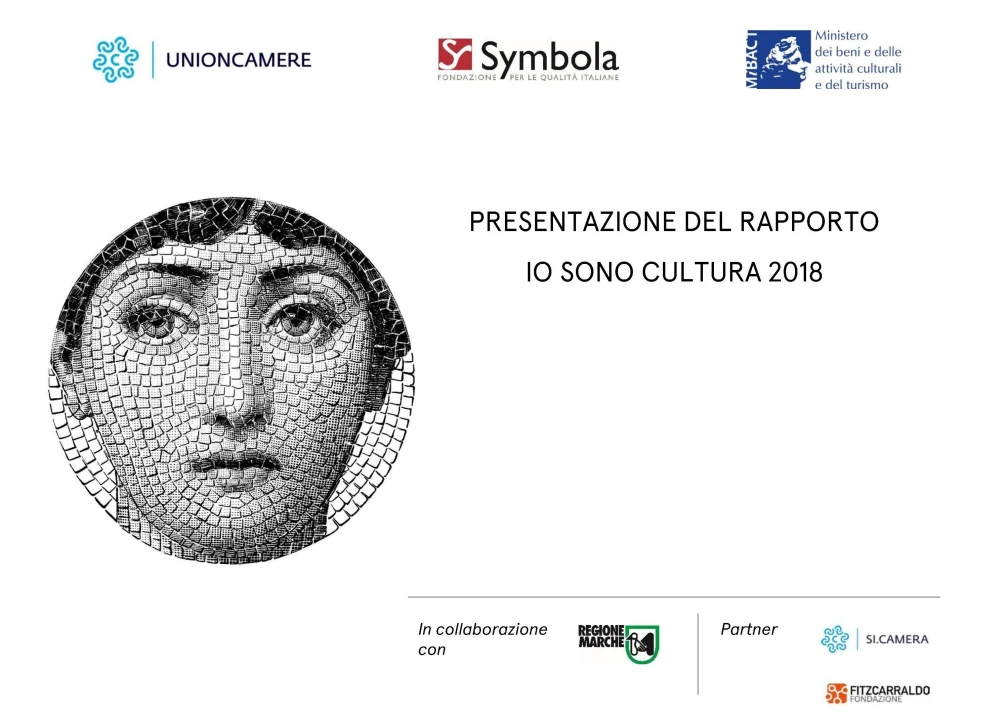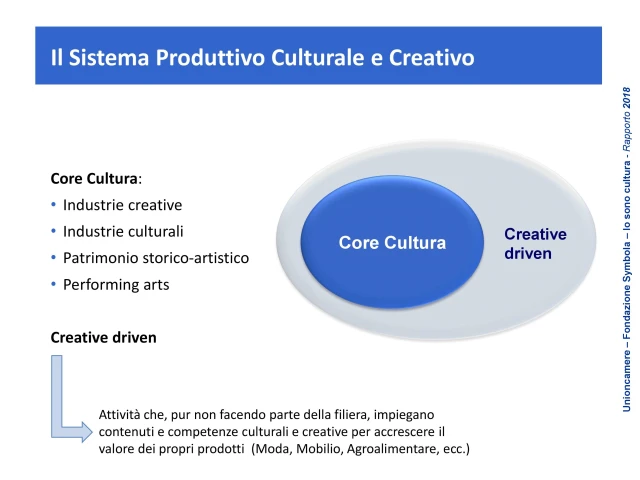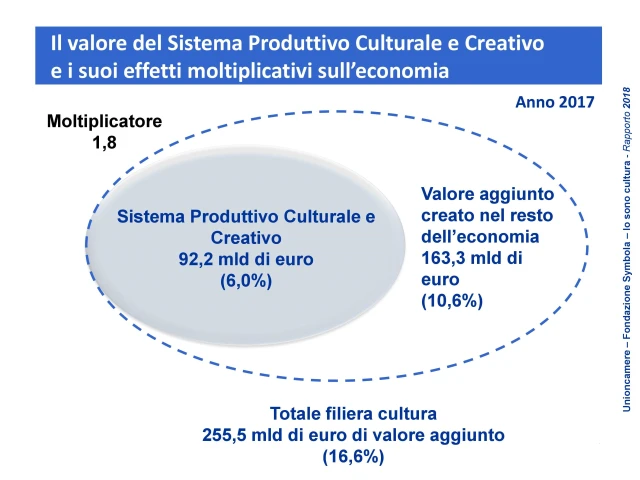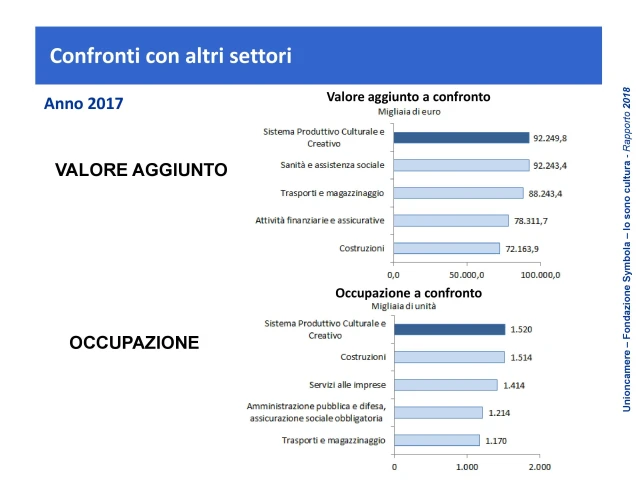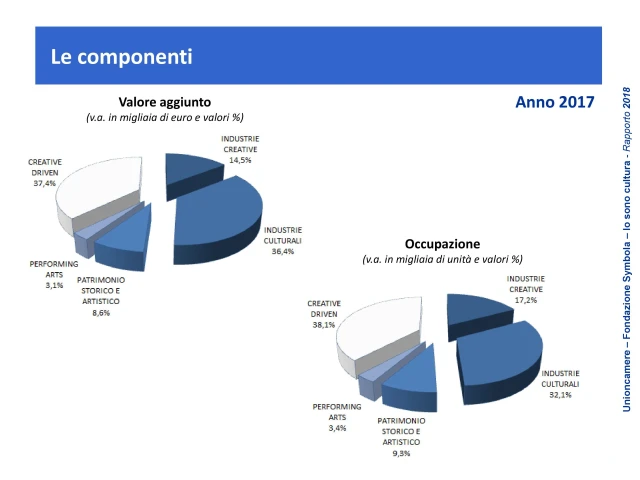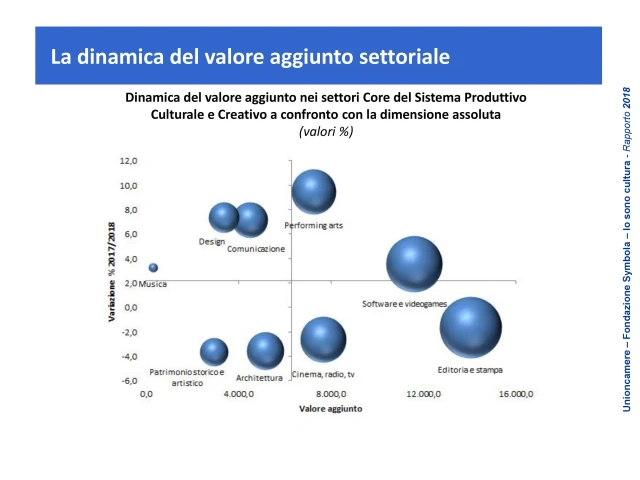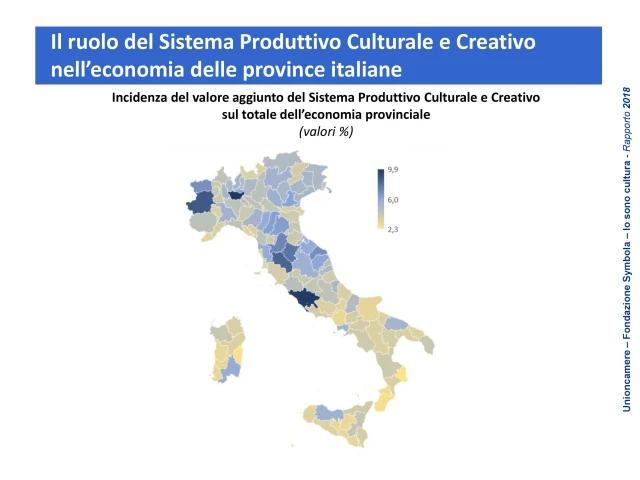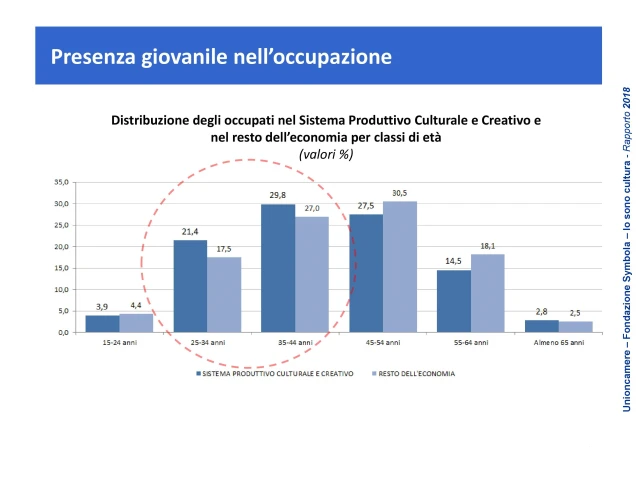Culture is one of Italy’s strong points. According to some surveys, such as the one conducted last year by the US News magazine together with the University of Pennsylvania, it is even the first country in the world for its cultural influence. A primacy linked not only to cultural production and historical heritage but also to our ability to transmit culture and beauty in production.
It is precisely this intersection between culture and manufacturing practised by Italy more than by other countries that represents a legacy from the past but also a key to the future. Just think of the Salone del Mobile which, in addition to being the most important exhibition in the sector, every year showcases this link between design, products and culture.
Fondazione Symbola and Unioncamere, in collaboration with the Marche Region, have been dedicating the report “Io sono cultura” to this world, its resources and critical issues for eight years now. This work has a particular value in the year dedicated by the European Commission to Cultural Heritage, and by the Ministry of Cultural Heritage and Activities and Tourism, together with the Ministry of Agricultural, Food and Forestry Policies, to Italian Food. Two well related themes, in particular in Italy.
The Cultural and Creative Production System (the report defines the cultural and creative supply chains as a whole) in 2017 accounted for 6% of the wealth produced in Italy: over €92 billion. This is an increase of 2.0% compared with the previous year.
And that is not all, because culture has a multiplier effect of 1.8 on the rest of the economy: in other words, for every euro produced by culture, 1.8 is activated in other sectors. The 92 billion, therefore, stimulate another 163 to arrive at 255.5 billion produced by the entire cultural chain, 16.6% of national added value, with tourism as the first beneficiary of this driving effect. This competitive effect is also confirmed by the fact that the geographical areas where cultural turnover is highest are also those where the manufacturing vocation is strong.
The Cultural and Creative Production System (alone, without considering the other segments of our economy) employs more than 1.5 million people, 6.1% of the total number of people employed in Italy. This is also an area of growth: +1.6%, this time with a result higher than that of the economy as a whole (+1.1%).
Io sono Cultura - with its numbers and stories, realized thanks to the precious contribution of about 40 leading personalities in the various sectors analyzed - plumbs and tells the hidden energies behind these results. We do that through an idea of culture naturally made up of museums, galleries, festivals, cultural heritage, literature, cinema, performing arts, but also of creative industries and Made in Italy: that is, all those productive activities that do not represent a cultural asset in themselves, but which derive their creative lymph and competitiveness from culture. So design, architecture and communication: creative industries that develop services for other sectors and convey content and innovation in the rest of the economy - from tourism to food and wine to manufacturing - giving rise to a hinge, a "hybrid area" in which lies creative-driven production, ranging from fashion to advanced manufacturing, in fact, to artistic craftsmanship.
This report demonstrates the vitality and richness of the culture and creativity sector, which allows us to face the transformations underway, in both the more traditional and more innovative sectors and in the education that feeds them. This is demonstrated, for example, by the fact that there are three Italian schools (Polimoda in Florence, Istituto Marangoni International in Milan and Domus Academy again in Milan) among the ten best fashion schools in the world that have been examined by the prestigious Business of Fashion's Global Fashion School Rankings 2017. The links in the chain are growing in skills and internationalization, Italy is present in the world rankings not only for its heritage but also for its creatives and their products.
Through creativity and design, Italian companies have shaped their products, redefining their meaning, culturally distinguishing them, making them different, strengthening their competitiveness and at the same time enriching a positive imagery of Italy. And it is also thanks to these "cultural" products that Made in Italy is today, according to KPMG (one of the four largest audit firms in the world), the third most famous brand in the world, after Coca Cola and Visa. The Italian design system enjoys a competitive advantage linked to a training system (from Advanced Artistic, Musical and Coreucational Training to Universities), spread throughout the territory with excellence such as the Politecnico di Milano, which this year ranked fifth in the world's top 10 QS World University Rankings by Subject in the Design area, the first among public universities. Italy is also first by number of companies in Europe: 29,000 design companies, more than 26,000 German and French, more than 21,000 English and 5,000 Spanish. Of the 179,000 European companies, one in six speaks Italian.
Speaking of Heritage, our country has developed great expertise in the field of restoration and technology, especially with regard to new materials, environmental monitoring and the development of innovative cleaning systems, thanks to nano and biotechnology. This primacy is of particular importance in the European Year of Heritage. Also in light of the fact that the safety and restoration of cultural heritage in the Apennines affected by the earthquake - a sacrosanct due act - can become a great opportunity: to make those lands and the long years of care that await us an innovative laboratory where to enhance experience and skills (we just want to mention the Higher Institute for Conservation and Restoration or the Opificio delle pietre dure), new businesses, technologies and new skills. All this with the aid of 8 per mille voluntary donation system, allocated by the State to cultural heritage, which for 10 years will be entirely dedicated to the areas affected by the earthquake.
In addition to the expertise gained over the decades in the field of conservation, in our country too there is a growing awareness that it is not the cultural heritage material to generate value alone, if not invested by cultural and creative capital, by residents and businesses. The aim is to consolidate development paths strongly related to the territories, in a craft weaving work tailored to each site, to meet the challenges related to innovation (social and digital), internationalization, training.
The strong digitalization is changing the forms of fruition of the patrimony and also of a great many audiovisual products, to the advantage of the smartphone. In parallel, the musical world continues to excel in the mode perhaps opposite to listening on smartphones, the live experience.
In segments with a high technological content, such as videogames, in which Italy had accumulated delays that have only been partially recovered in recent years, commercial and industrial growth is accompanied by a new awareness and artistic maturity, demonstrating how technical workers have taken root in our country, and how creatives are free to express their vision of the world thanks to the consolidation of small-medium boutique studies, based on alternative and disruptive narratives.
In recent years, these new developments have been accompanied by reforms in various segments of the supply chain: many steps forward have been taken, but they must be monitored, strengthened and supplemented with other necessary measures. From the reform for the consolidation of a national system of museums (which today are expected adequate tools that can give substance to the model chosen), to the first organic law on the audiovisual sector, which recognizes its strategic role as a formidable vehicle for cultural training and promotion of the country abroad. It was also the year of the "Entertainment Bill", long awaited and aimed at rationalizing state support interventions, harmonizing them with those of local authorities. Innovations include the extension of the Art Bonus to the entire performing arts and the consolidation of the tax credit for the music sector. Finally, after months of research and meetings, this year the Ministry of Cultural Heritage and Activities and Tourism has released the first strategic plan for the development of photography, affirming the central role of the medium in the national cultural heritage.
What is told in Io sono cultura is the importance and vitality of a sector that influences and activates many productive sectors, which has effects on the overall image of the country and on its strength to penetrate abroad. "If we did all the things we are capable of, we would literally astound ourselves", said Thomas Edison. Italy has to be Italy, it has to make the most of its talents, its best energies and its peculiar development model: which is made up of competitiveness and beauty, the production of wealth and sustainability, social cohesion and innovation and technology.


